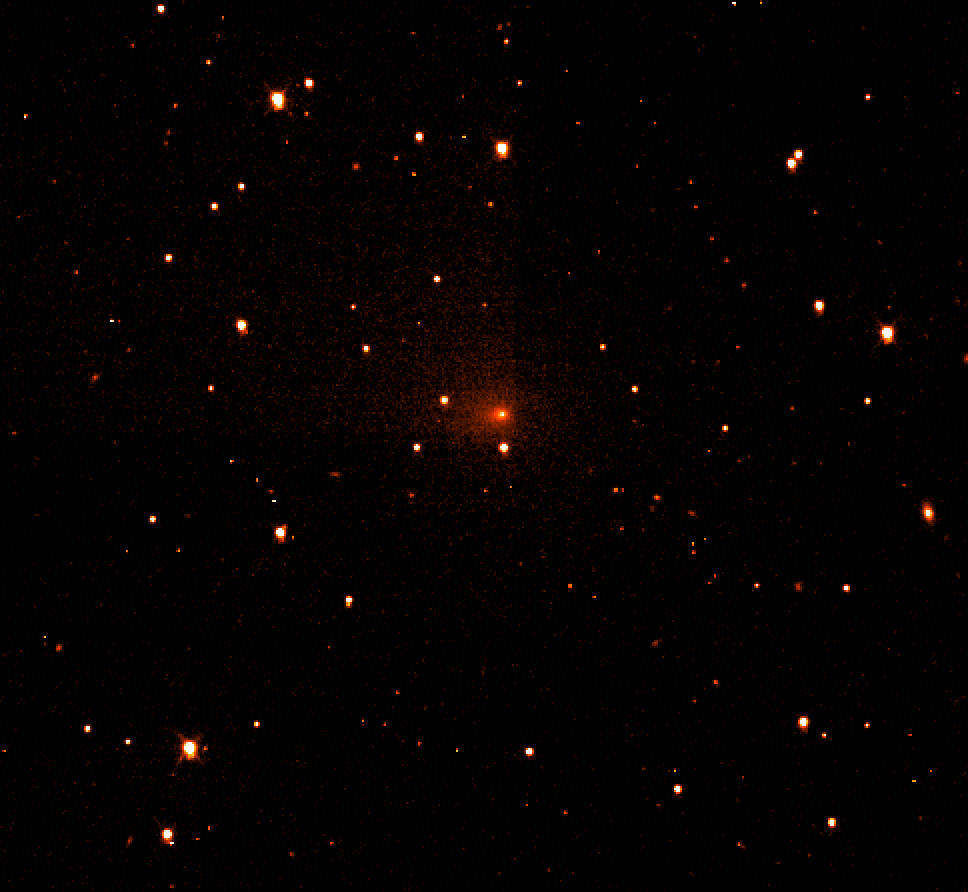COSAM News Articles 2018 November Physics Collaboration is Awarded Two Days on the Hubble Space Telescope to Study Comet 46P/Wirtanen
Physics Collaboration is Awarded Two Days on the Hubble Space Telescope to Study Comet 46P/Wirtanen
A collaboration led by Auburn University Astrophysicist Dr. Dennis Bodewits is the recipient of an award to use the Hubble Space Telescope for 36 orbits, or two days and six hours in December 2018. Their team will study the chemical composition of Comet 46P/Wirtanen, and atomic and molecular reactions near its nucleus. The Hubble Space Telescope, one of the world’s largest and most versatile telescopes, allows researchers to study the universe in the far ultraviolet, light that is blocked for telescopes on the ground by the Earth’s atmosphere.
“This is a space mission in reverse,” explains Dr. Bodewits. “The comet will pass Earth very closely and it may be quite bright on December 16, 2018. This provides an incredible opportunity to collect data that can impact research for decades on the much larger population of comets that are farther away.”
Working together on a previous comet mission, Rosetta, to Comet 67P/Churymov-Gerasimenko, the team of scientists wrote an ambitious research proposal to use the Hubble Space Telescope to observe the Comet 46P/Wirtanen. They will compare the data from the space mission with the new information gathered using Hubble.
The Rosetta mission originally provided detail about how to use Ultraviolet light to measure the composition of comet gas. “Reactions in the comet’s atmosphere produce very detailed fingerprints in ultraviolet light,” shares John Noonan, a graduate student at the Lunar and Planetary Laboratory at the University of Arizona. “I am excited about the ability to find gases that tell us where the comet formed in the early days of the solar system.”
Astronomers around the world are eagerly anticipating the comet’s fly by. Before the scheduled viewing on the Hubble Telescope, Dr. Bodewits and Dr. Uwe Konopka from Auburn University’s Department of Physics will visit Lowell’s Discovery Channel Telescope in Arizona to map the gas in the comet. The Neil Gehrels Swift Observatory will also aid in determining the spin of the comet based upon the gas streaming from the comet’s nucleus. Additionally, Las Cumbres Observatory, a network of 21 telescopes at eight different sites around the world, will help provide data for this project.
Anyone interested in seeing live images of this mission can view it directly on December 16 from the Hubble Telescope through Space Telescope Live.
The collaboration includes Auburn University; the Southwest Research Institute in Boulder, CO; the Lunar and Planetary Laboratory at the University of Arizona; the Planetary Science Institute in Tucson, AZ; Johns Hopkins University’s Applied Physics Laboratory in Laurel, MD; and the Jet Propulsion Laboratory in Pasadena, CA.
Latest Headlines
-
07/09/2024
-
Summer Bridge Program celebrates 21 incoming Auburn students as they prepare for future STEM careers07/02/2024
-
07/02/2024
-
06/17/2024
-
06/07/2024


